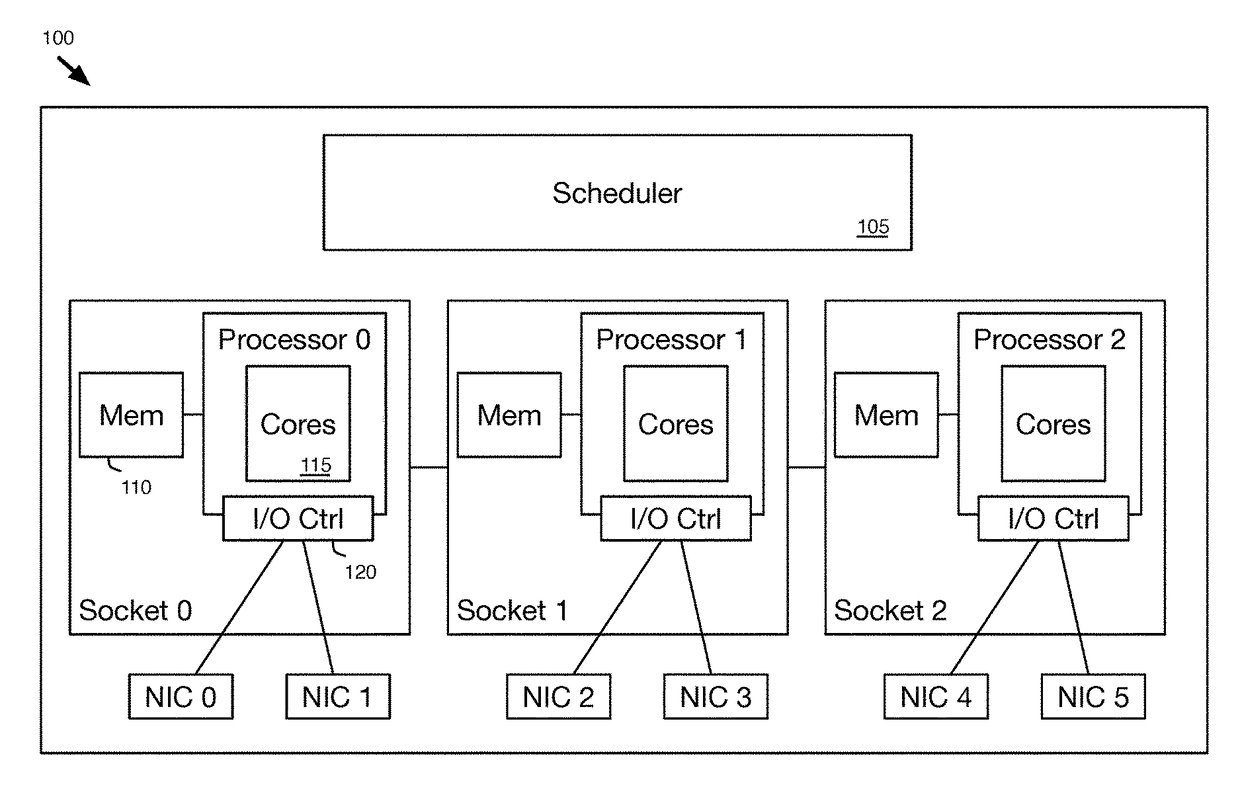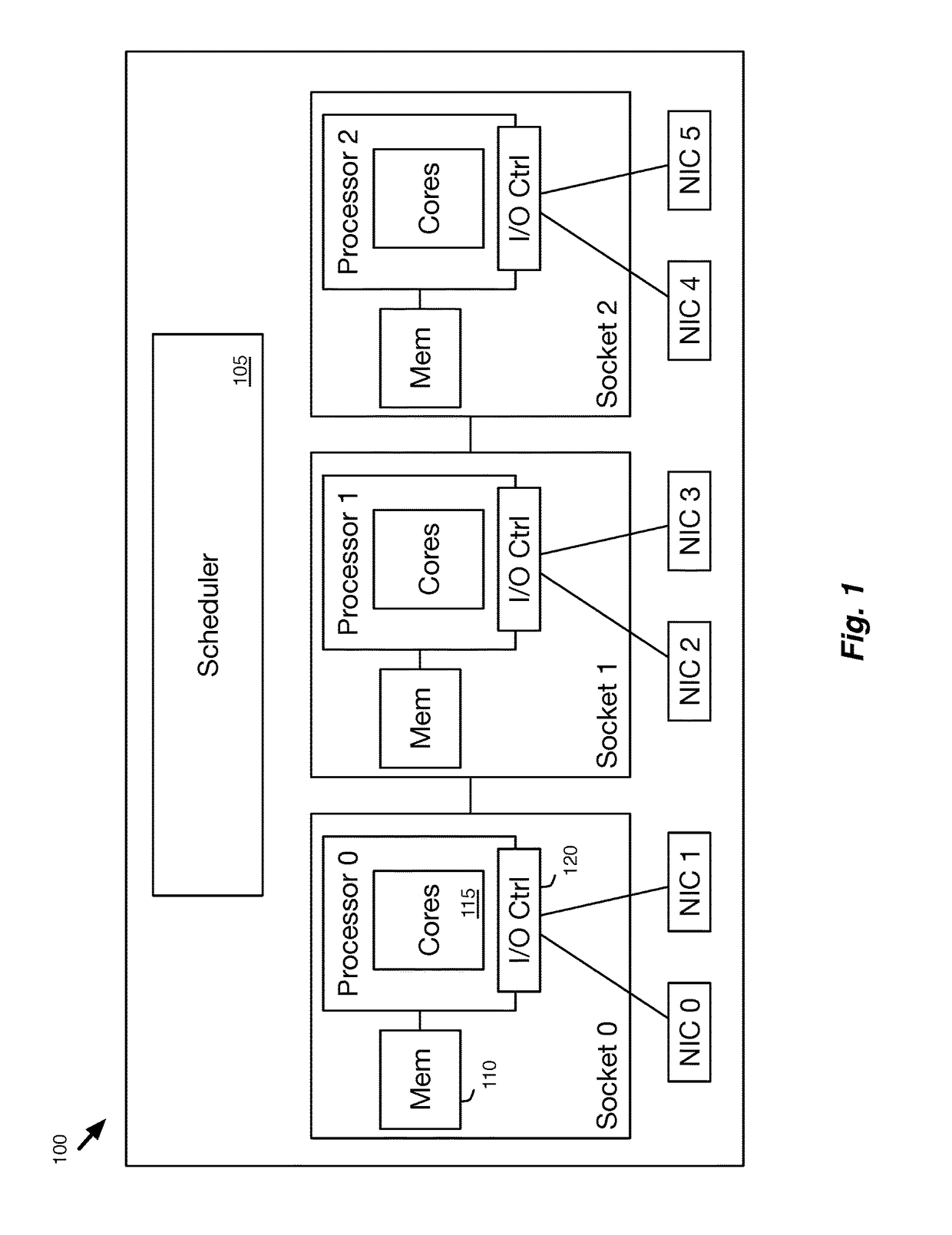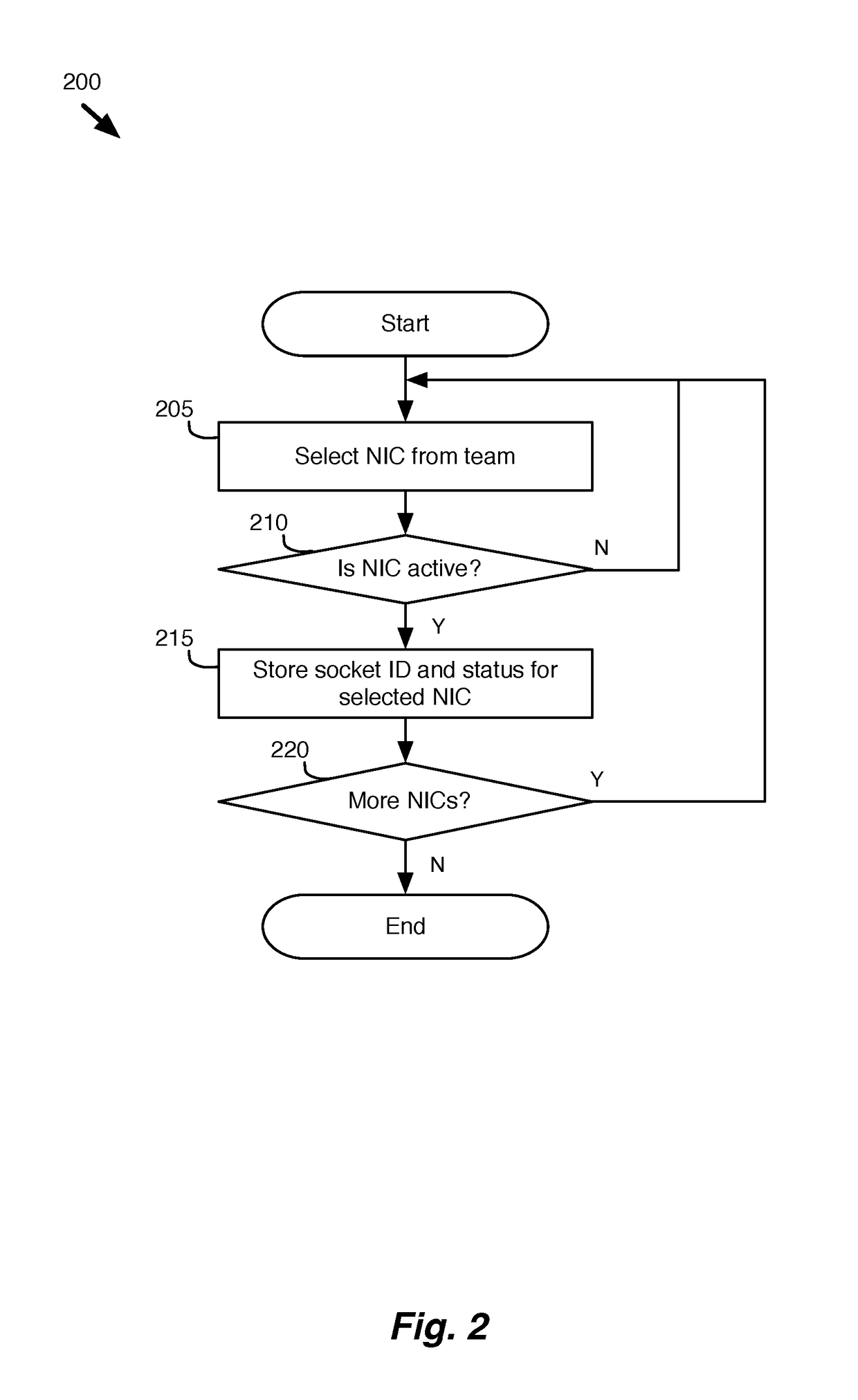Locality-aware scheduling for nic teaming
a scheduling and locality technology, applied in the field of locality-aware scheduling for nic teaming, can solve the problem that the load balancing algorithms/scheduling are not optimized for multi-socket architectures, and achieve the effect of optimizing the processing of packets
- Summary
- Abstract
- Description
- Claims
- Application Information
AI Technical Summary
Benefits of technology
Problems solved by technology
Method used
Image
Examples
Embodiment Construction
[0020]In the following detailed description of the invention, numerous details, examples, and embodiments of the invention are set forth and described. However, it should be understood that the invention is not limited to the embodiments set forth and that the invention may be practiced without some of the specific details and examples discussed.
[0021]Some embodiments provide a method for distributing packets processed at multiple sockets across a team of network interface controllers (NICs) in a processing system. The method of some embodiments uses existing distribution (or selection) algorithms for distributing traffic across NICs of a NIC team (across several sockets), but augments the method to prioritize local NICs over remote NICs. Each socket includes a set of processing cores and is associated with, or has an affinity to, a portion of other system resources (e.g., memory, NICs, other devices, etc.) available in the processing system.
[0022]In a non-uniform memory access (NUM...
PUM
 Login to View More
Login to View More Abstract
Description
Claims
Application Information
 Login to View More
Login to View More - R&D
- Intellectual Property
- Life Sciences
- Materials
- Tech Scout
- Unparalleled Data Quality
- Higher Quality Content
- 60% Fewer Hallucinations
Browse by: Latest US Patents, China's latest patents, Technical Efficacy Thesaurus, Application Domain, Technology Topic, Popular Technical Reports.
© 2025 PatSnap. All rights reserved.Legal|Privacy policy|Modern Slavery Act Transparency Statement|Sitemap|About US| Contact US: help@patsnap.com



